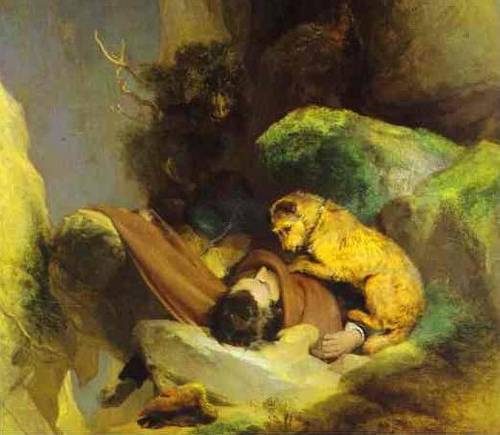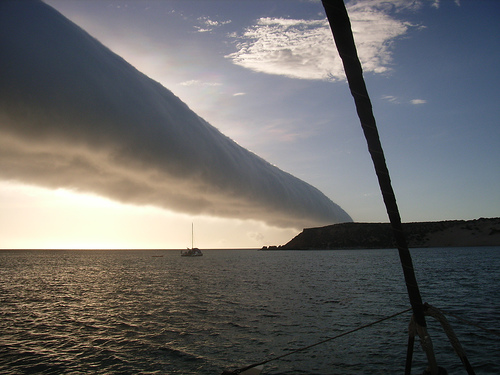“It is difficult not to write satire.” — Juvenal
Indie Roc
Excerpts from Midwestern newspapers, April 1948:
BELVIDERE, Ill. – (UP) – A farmer and a truck driver reported today that they had seen a bird ‘bigger than an airplane.’ … The giant bird was reported by Robert Price and Veryl Babb. Price said he saw it while working near his barn on his farm near Caledonia, Ill. … He said it had a long neck and ‘what I suppose were its feet trailing behind it.’ … Babb, a Freeport, Ill., truck driver, reported seeing the bird at a different location on the same day. … ‘When I spotted the thing it was coasting. It was bigger than an airplane and reminded me of one of those prehistoric monsters I learned about when I was in school.’
ST. LOUIS – (UP) – A retired Air Force colonel and a 12 year-old boy last night backed up the report by two Belvidere, Ill., residents of spotting a ‘monster bird.’ … ‘At first I thought there was something wrong with my eyesight,’ [Col. W.F.] Siegmund said. ‘But it was definitely a bird, and not a glider or jet plane.’ He described the creature as about the size of a small pursuit plane and said it was flying northeast at an altitude of between 4,000 and 5,000 feet. … The Trares boy said he spotted the bird in the air one evening at sunset and ran yelling into his house to tell his mother. He said it was gray-green in color and about the size of an airplane.
ALTON, Ill. – (UP) – An ‘enormous’ bird, first reported sighted two weeks ago, was seen flying over the outskirts of Alton shortly before noon yesterday. E.M. Coleman, a former salesman, and his 5 year-old son, James, said the bird was flying at about 500 feet and ‘cast a shadow the same as that of a Piper Cub at the same height.’ Coleman said it was an ‘enormous, incredible thing with a body that looked like a naval torpedo.’
Curiously, flying monsters have been reported in that area for more than 300 years.
The Dog of Helvellyn

On April 17, 1805, artist Charles Gough set out to walk over Helvellyn, a mountain in England’s Lake District, with his dog, Foxie. He never returned. Three months later, on July 27, a shepherd heard barking high on the mountain’s flank, at about 2,300 feet, and discovered Foxie beside her master’s body.
It appeared that Gough had fallen to his death, and the dog had remained by his side for three months. How she had survived up there remains a mystery — she had even borne a puppy, which was found dead in a burrow dug into the mountainside. The episode captured the Romantic imagination, and Wordsworth, Edwin Landseer, and Walter Scott all paid tribute to Foxie’s loyalty:
How long did’st thou think that his silence was slumber!
When the wind waved his garment how oft did’st thou start!
But I can find no record of what became of her.
Bonus dog-loyalty-overtime stories: New Mexico, Montana, Tokyo.
“Indifference”
The cat is in the parlour,
The dog is in the lake;
The cow is in the hammock,–
What difference does it make?
Anthologist Carolyn Wells calls this “immortal”; I am inclined to agree. No one knows who wrote it.
Can You Do Without Soap?
Heinrich Ollendorff meant well. The grammarian intended his phrasebooks to teach German, French, Danish, and Russian to a new generation of language students. But who would ever need to speak these sentences?
- Stop, the postilion has been struck by lightning!
- A man is drowning. Is there a life buoy, a rope, a grapnel at hand?
- Unhand me, sir, for my husband, who is an Australian, awaits without.
- After having lost all my money, I was beaten by bad-looking men; and, to my still greater ill luck, I hear that my good uncle, whom I love so much, has been struck with apoplexy.
Ironically, he’s remembered today in the adjective ollendorffian, which means “in the stilted language of foreign phrasebooks.”
Sky Waves

No one knows what causes the “morning glory” clouds of northern Australia, but they’re striking — long rolling tubes that can stretch for hundreds of kilometers across the Gulf of Carpentaria.
Glider pilots converge on tiny Burketown in Far North Queensland each fall, hoping to “surf the glory,” riding the unique air currents that accompany the clouds.
In a Word
chichevache
n. an emaciated monster said to feed on patient wives
(The bicorn, which feeds on kind husbands, is always fat.)
No Man’s Land
On the border between Egypt and Sudan is a small trapezoid of landlocked desert, about 2,000 square kilometers.
Egypt says it belongs to Sudan. Sudan says it belongs to Egypt.
That makes Bir Tawil the only land area in the world (outside of Antarctica) that’s not claimed by any state.
“Justice to Scotland”
(“An Unpublished Poem by Burns”)
O mickle yeuks the keckle doup,
An’ a’ unsicker girns the graith,
For wae and wae! the crowdies loup
O’er jouk an’ hallan, braw an’ baith
Where ance the coggie hirpled fair,
And blithesome poortith toomed the loof,
There’s nae a burnie giglet rare
But blaws in ilka jinking coof.
The routhie bield that gars the gear
Is gone where glint the pawky een.
And aye the stound is birkin lear
Where sconnered yowies wheeped yestreen,
The creeshie rax wi’ skelpin’ kaes
Nae mair the howdie bicker whangs,
Nor weanies in their wee bit claes
Glour light as lammies wi’ their sangs.
Yet leeze me on my bonny byke!
My drappie aiblins blinks the noo,
An’ leesome luve has lapt the dyke
Forgatherin’ just a wee bit fou.
And Scotia! while thy rantin’ lunt
Is mirk and moop with gowans fine,
I’ll stowlins pit my unco brunt,
An’ cleek my duds for auld lang syne.
— Punch, collected in James Parton, The Humorous Poetry of the English Language, 1884
Good Girl

Here’s some pretty abstract expressionism — it was painted by a dog. Tillamook Cheddar is a Jack Russell terrier who works with her claws and teeth, spending hours on each canvas and biting anyone who interferes.
She knows what she’s doing — to date she’s had 16 exhibitions in the United States, Bermuda, the Netherlands, and Belgium, and earned $100,000.
